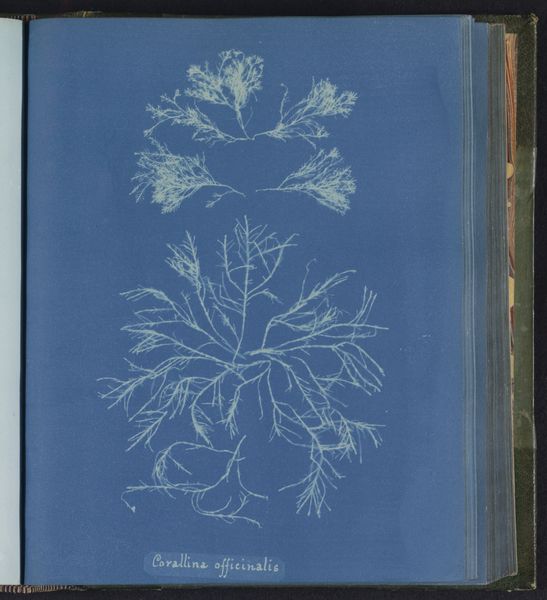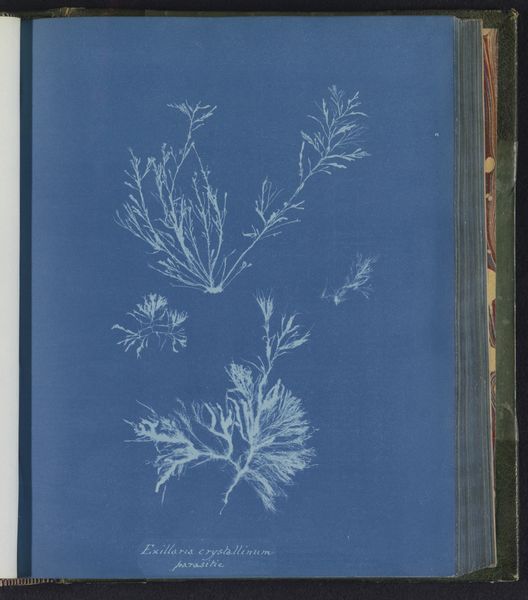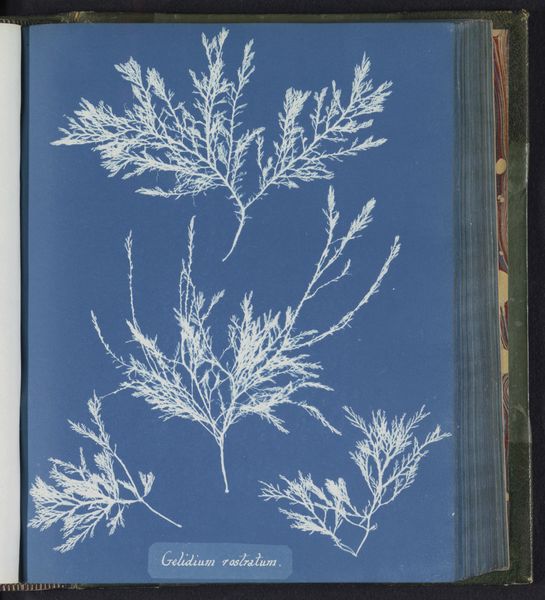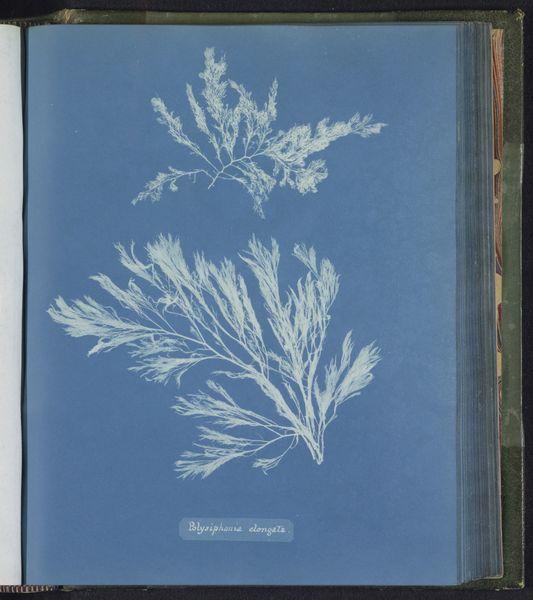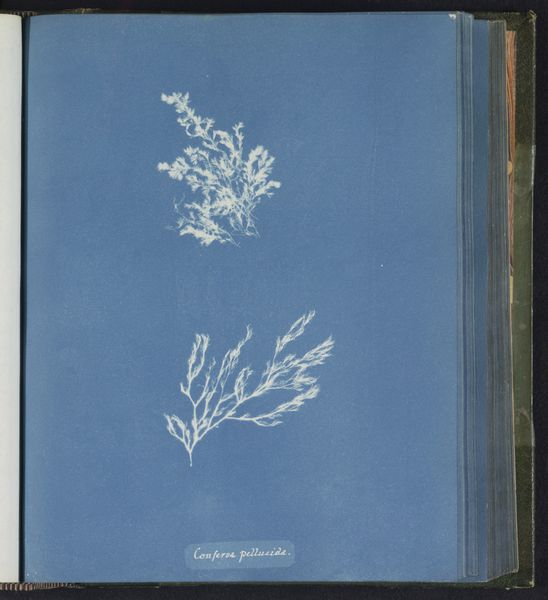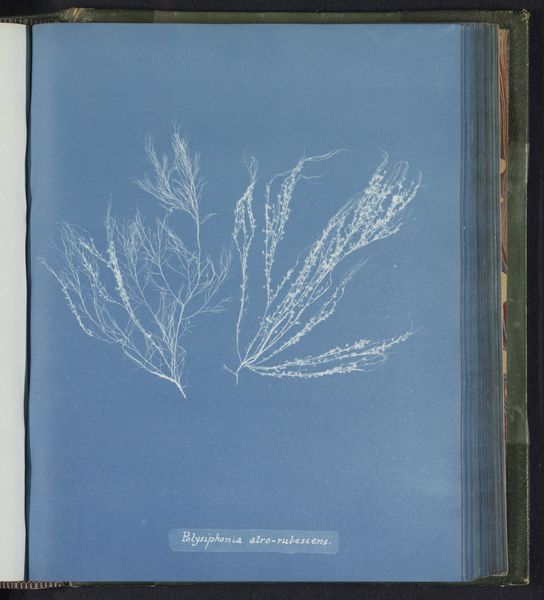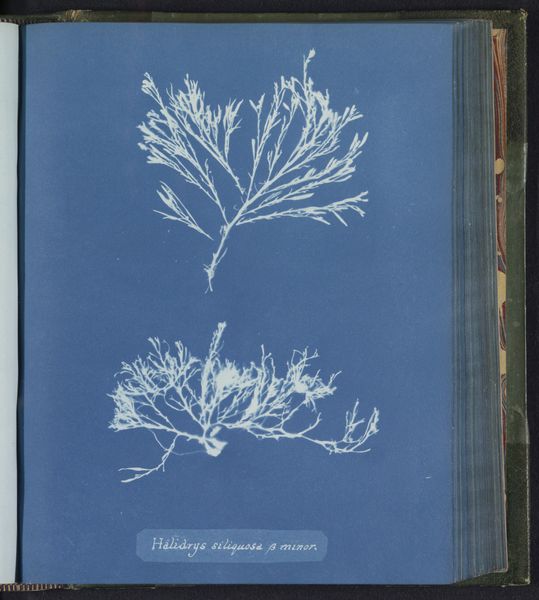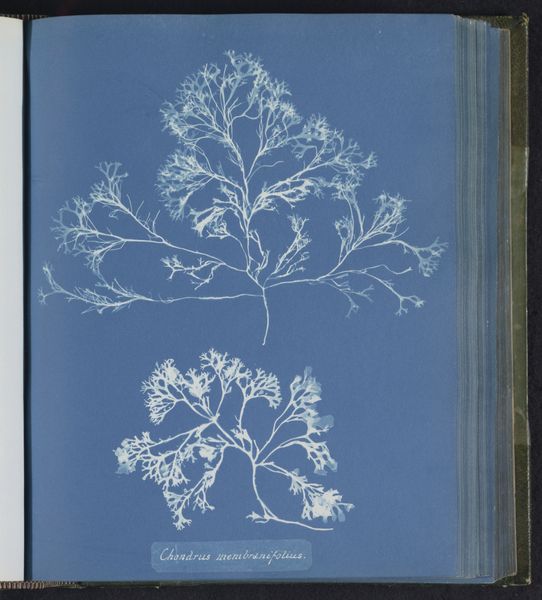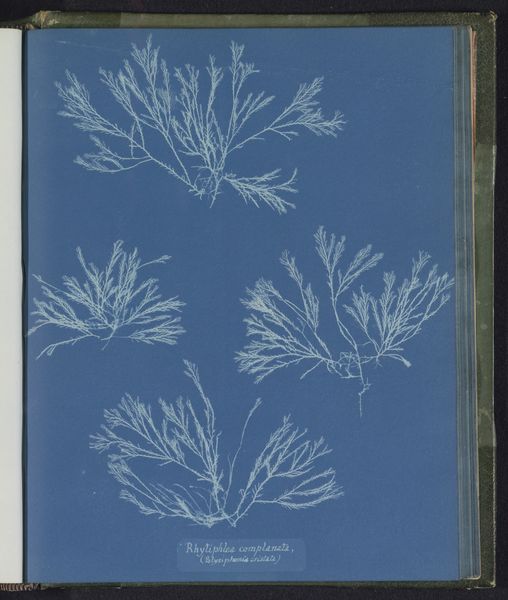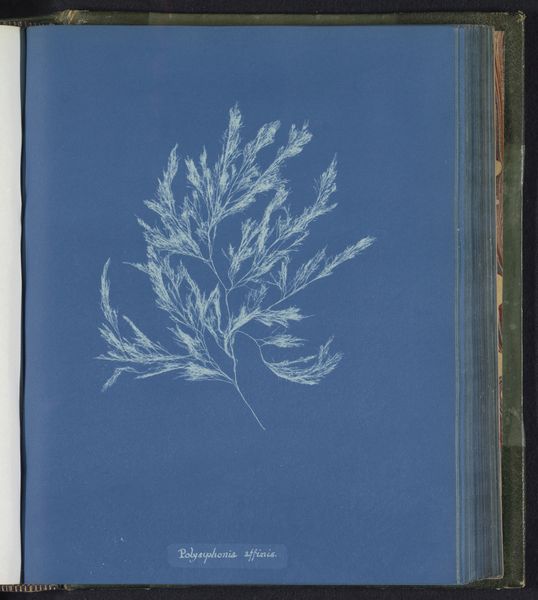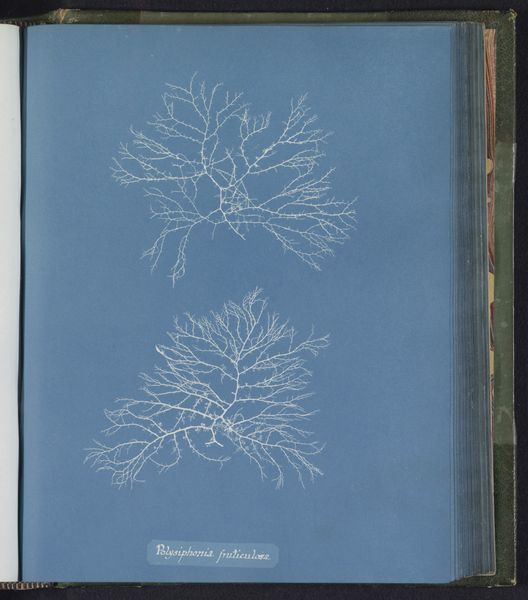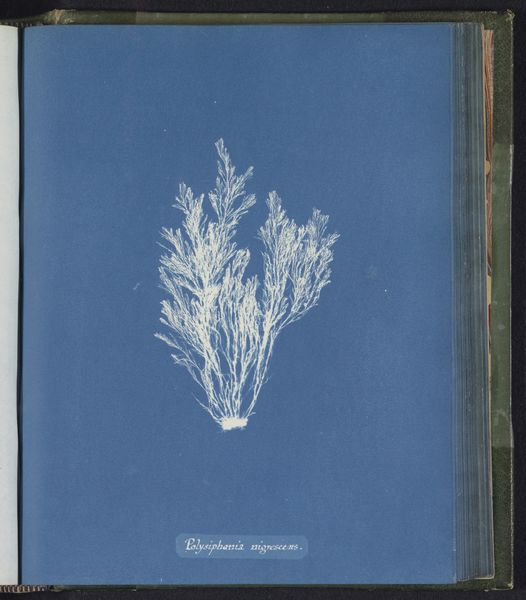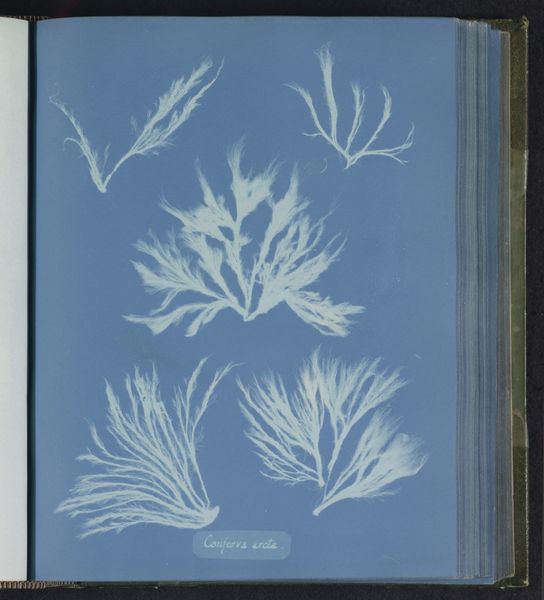
print, cyanotype, photography
# print
#
form
#
cyanotype
#
photography
#
line
#
naturalism
Dimensions: height 250 mm, width 200 mm
Copyright: Rijks Museum: Open Domain
Curator: Anna Atkins’ cyanotype titled "Corallina elongata," made sometime between 1843 and 1853, presents us with ethereal impressions of algae specimens. Editor: The immediate impression is of delicate, ghostly forms floating on a serene blue sea. There’s something very minimalist about the arrangement. Curator: It's important to remember Atkins was a botanist as well as a photographer. She used cyanotypes, a photographic printing process that yields a distinctive cyan-blue print, to document her seaweed collection. This has implications that speak to gendered scientific pursuits. As women were restricted to more decorative roles in society, and she may not have had formal research avenues available, her art became a method for exploring objective inquiry, thus challenging conventions about gender. Editor: The cyanotype technique lends itself beautifully to capturing the linear quality of the algae, creating a striking contrast between the white or near-white specimens and the deep blue ground. What strikes me most is the arrangement and balance; the formal organization creates visual harmony from seemingly simple forms. Curator: This naturalism and use of the cyanotype points to Victorian society’s preoccupation with both scientific observation and early photography. It also points to gender and class within Victorian culture; while Atkins was of higher social standing, working class women would find labor in related scientific industries, which afforded a select few similar scientific opportunities. This piece offers an important viewpoint, albeit with inherent biases reflective of Atkins' social standing. Editor: I am struck by how modern this image seems despite its age. I am impressed by its simplicity. The composition almost evokes the avant-garde. Curator: Indeed, "Corallina elongata" captures not only the visual characteristics of algae, but also opens avenues to discussing scientific inquiry, class, gender, and visual representation in the 19th century. Editor: It makes me see the abstract qualities of the algae in an entirely new way, shifting my perception beyond just scientific classification. The cyan hue is meditative; I feel a great sense of quiet looking at this work.
Comments
No comments
Be the first to comment and join the conversation on the ultimate creative platform.
